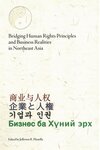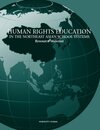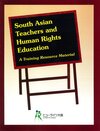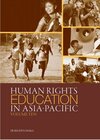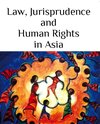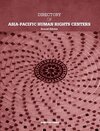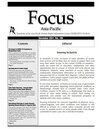Cases
Mabo and others v. Queensland (No. 2) [1992] HCA 23; (1992) 175 CLR 1 F.C. 92/014 (3 June 1992)
Mabo v. Queensland (No. 1) (1988) 166 CLR 186 F.C. 88/062 Summary of proceedings: AUSTLII WebsiteLegislationNative Title Act 1993 (Cth)
Background
On 20 May 1982, Eddie Koiki Mabo, Sam Passi, David Passi, Celuia Mapo Salee and James Rice began their legal claim for ownership of their lands on the island of Mer in the Torres Strait between Australia and Papua New Guinea. The High Court required the Supreme Court of Queensland to determine the facts on which the case was based but while the case was with the Queensland Court, the State Parliament passed the Torres Strait Islands Coastal Islands Act which stated 'Any rights that Torres Strait Islanders had to land after the claim of sovereignty in 1879 is hereby extinguished without compensation'.The challenge to this legislation was taken to the High Court and the decision in this case, known as Mabo No. 1, was that the Act was in conflict with the Commonwealth Racial Discrimination Act of 1975 and was thus invalid. It was not until 3 June 1992 that Mabo No. 2 was decided. By then, 10 years after the case opened, both Celuia Mapo Salee and Eddie Mabo had died.Six of the judges agreed that the Meriam people did have traditional ownership of their land, with Justice Dawson dissenting from the majority judgment. The judges held that British possession had not eliminated their title and that 'the Meriam people are entitled as against the whole world to possession, occupation, use and enjoyment of the lands of the Murray Islands'.
Following the High Court decision in Mabo No. 2, the Commonwealth Parliament passed the Native Title Act in 1993, enabling Indigenous people throughout Australia to claim traditional rights to unalienated land.(Source: Documenting a Democracy: Mabo v Queensland)
Legal issues
The first question was whether the Meriam people did have traditional rights and interests in the land of the Murray Islands and, if so, whether Australian law would protect those rights and interests. If native title is recognised, are Indigenous people entitled to compensation if their land is taken away?
The High Court held by a majority of 6-1 that the Meriam people were entitled, as against the whole world, to the possession, use, occupation and enjoyment of (most of) the land of the Murray Islands. The six judges in the majority rejected the traditional doctrine that Australia was terra nullius ('land belonging to no-one') at the time of European settlement.
Rather the majority found that the common law of Australia recognises a form of native title to land. Pre-existing rights and interests in land survived colonisation and still survives today:
- where the people have maintained their connection with the land; and
- where their title has not been extinguished by legislation or any action of the executive arm of the government inconsistent with that title.
Neither the establishment of the colonies nor Queensland's 1879 annexation of the Murray Islands extinguished the Meriam people's native title. However, native title could still be readily extinguished by government actions inconsistent with respect for native title and, before 1975, there was no right to compensation. The relevance of the RDA is that it requires fair and just compensation to be paid for loss of native title after 1975. Failure to pay compensation would be racially discriminatory because other land holders are entitled to compensation.
(Source: Human Rights & Equal opportunities Commission Website: Racial Discrimination/ Landmark Cases under the Racial Discrimination Act 1975)
After the proceedings commenced the Queensland Government passed the Queensland Coast Islands Declaratory Act in 1985. This Act purported to extinguish whatever rights and interests the Meriam people might have had under their traditional law. It also purported to extinguish traditional rights retrospectively (with effect from 1879 when Queensland annexed the islands) and without compensation. The Murray Islanders argued, among other things, that the 1985 Queensland Act denied them equality before the law and the enjoyment of their right to own property and arbitrarily deprived them of their property. These are human rights protected by article 5 of the International Convention on the Elimination of All Forms of Racial Discrimination.
By a majority of 4-3, the High Court held that the Queensland Coast Islands Declaratory Act was invalid because it was inconsistent with the RDA. It discriminated against the Meriam people by purporting to extinguish any rights they might have in their land.
(Source: Human Rights & Equal opportunities Commission Website: Racial Discrimination/ Landmark Cases under the Racial Discrimination Act 1975)
"The common law does not necessarily conform with international law, but international law is a legitimate and important influence on the development of the common law, especially when international law declares the existence of universal human rights. A common law doctrine founded on unjust discrimination in the enjoyment of a civil and political rights demands reconsideration. It is contrary both to international standards and to the fundamental values of our common law to entrench a discriminatory rule which, because of the supposed position on the scale of social organisation of the indigenous inhabitants of a settled colony, denies them a right to occupy their traditional lands.” Brennan J in Mabo v Queensland (From: Does Australia Need a Bill of Rights? Justice David Malcolm AC)“
...the Court did not overturn anything of substance, but merely propounded white domination and superiority over Aborigines by recognising such a meagre Aboriginal form of rights over land. The judges did little more than ease their own conscience of the guilt they so correctly feel for maintaining white supremacy” Michael Mansell in Foley, Gary: The Road to Native Title: The Aboriginal Rights Movement and the Australian Labor Party 1973 -1996
The decision in Mabo
The evidence in Mabo showed that:
- the Murray Islands, which lie in the Torres Strait, had a total land area is of the order of 9 square kilometres. The biggest is Mer (known also as Murray Island), oval in shape about 2.79 kms long and about 1.65 kms across. A channel about 900 m wide separates Mer from the other two islands, Dauar and Waier, which lie closely adjacent to each other to the south of Mer;
- the people who were in occupation of these Islands before first European contact and who have continued to occupy those Islands to the present day are known as the Meriam people;
- although outsiders, relatively few in number, have lived on the Murray Islands from time to time and worked as missionaries, government officials, or fishermen, there has not been a permanent immigrant population;
- anthropological evidence showed that the present inhabitants of the Islands were descended from the people in occupation at sovereignty;
- the people lived in groups of huts strung along the foreshore or strand immediately behind the sandy beach. They still do although there has been a contraction of the villages and the huts are increasingly houses. The cultivated garden land was and is in the higher central portion of the island. There seems however in recent times a trend for cultivation to be in more close proximity with habitation. The groups of houses were and are organised in named villages. It is far from obvious to the uninitiated, but is patent to an islander, that one is moving from one village to another. The area occupied by an individual village is, even having regard to the confined area on a fairly small island which is in any event available for ‘village land’, quite small. Garden land is identified by reference to a named locality coupled with the name of relevant individuals if further differentiation is necessary. The Islands are not surveyed and boundaries are in terms of known land marks such as specific trees or mounds of rocks;
- since annexation an Island Court, the Island Council, a police force and other government agencies have been introduced to the Islands. Land disputes were dealt with by the Island Court in accordance with the custom of the Meriam people. Thus, even in cases where there may have been an absence of a law to determine a point in contest between rival claimants, such a contest was capable of being determined according to the Meriam people’s laws and customs.
The court held that the Crown's title to the Mer Islands was held subject to the rights and interests of the Mer Islanders possessed under the traditional laws acknowledged and the traditional customs observed by the indigenous inhabitants. The court also noted that, because the native title is held in accordance with the local native system:
- it is only capable of entitlement and enjoyment within that system, and hence it is not capable of alienation or assignment;
- it does not constitute a legal or beneficial estate or interest in the land.
Having regard to the evidence led in Mabo, and to the principles expressed in Amodu Tijani, the decision essentially involved the application of the facts as found in accordance with well established legal principle.
However Brennan J, with whom Mason CJ and McHugh J agreed, made some observations by way of obiter as to the circumstances in which native title rights and interests could be lost subsequent to European settlement, saying that:'Where a clan or group has continued to acknowledge the laws and (so far as practicable) to observe the customs based on the traditions of that clan or group, whereby their traditional connection with the land has been substantially maintained, the traditional community title of that clan or group can be said to remain in existence'
(Source: Allens Arthur Robinson website: Native Title Roundup: Mabo and Beyond)

